#wagonway
Explore tagged Tumblr posts
Text
Invention of Trains
#History#Wagonways#SteamEngine#Innovation#Engineering#JamesWatt#Trevithick#FirstTrain#Challenges#GeorgeStephenson#RailwayRevolution#RailGauge#Standardization#PublicTransport#RailwayHistory#ElectricTrains#Progress#ModernTrains#Transportation#inventions#train#travel
0 notes
Text


Inktober 2024, Day 17 - Journal. The traveler got a journal from the trader…and the parchment from the Templar was a missing page!
Inktober 2024, Day 18 - Drive. The traveler got to drive the steam wagonway engine over the vast ravine.
9 notes
·
View notes
Text

(wip) The Fish Riders of Hylae
A tradition beginning amongst the Braellian and Kin of the Southern Hylae Valley, the Giant Cartfish are bred in captivity and used to pull carts along the Hylae Wagonway. They wear medallions of Unville, the Braellian God of Ambition, which are believed to scare off bad spirits and omens that they believe can attract bandits.
Their riders are notable for their mix of Braellian and Kin traditions/culture, reflected in their clothing that is a mix of Kin veil wear and Braellian travelling gear. They are also known for harvesting Cartfish Oil, a magically potent element that produces an electric charge when dispersed, it is often used for lighting and metallurgical application .
4 notes
·
View notes
Text
"MEGA RICH LIGHT-BENDING GUY - 'Ah, a fellow history buff! I, myself, am currently reading up on Franconigerian-era trains. Very interesting stuff. '"
I HATE DE LINES LIKE THIS. where i have to decide if i'm going to take this ridiculous shit as canon, or inconsistent writing. what do you mean franconigerian trains?????? IT WAS 500 YEARS AGO. are you telling me that elysium can't even make an aerodynamic car but they've had trains for 500 fucking years.

i guess wagonways would fit the bill???? maybe????? i guess??????
3 notes
·
View notes
Photo




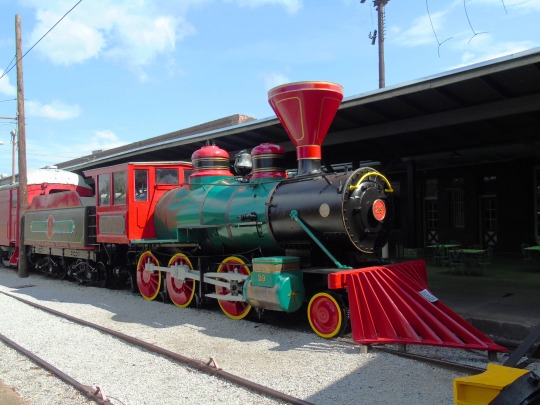

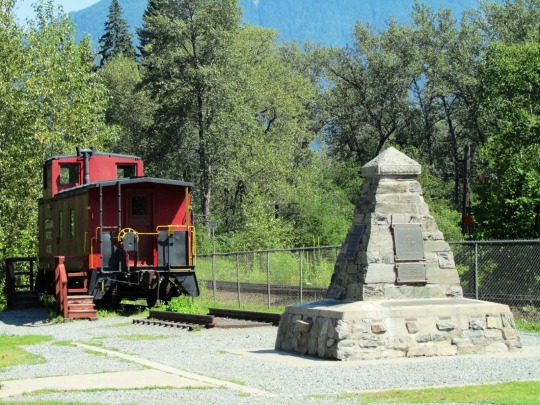



National Train Day
Go out and take a ride on a train, or watch them go by from a comfortable vantage point, whether fast, sleek commuter trains or large, loud steam engine transporters.
They cross thousands of miles across the countryside all over the world, transporting goods and passengers to places far-flung, and bringing back the same to their point of origin.
Two gleaming lines of silver lay their path as they move through cities and forests, mountains, and plains to bring everything to those who need it, whether it’s cargo or people. Of course, we’re talking about trains, those powerful machines that inspired so much of history, and have done amazing things for economies and industry all over the world.
National Train Day commemorates these beautiful machines and the role they play in our lives.
History of National Train Day
The history of National Train Day is the history of trains, and that history goes back farther than you might suspect. Railroads were actually a progression from wagonways, which were essentially railroads powered by horses, and have a history going back over 2000 years.
The first example of what we might call a “train track” emerged near Corinth in Ancient Greece in around 600 BC. Men and animals would pull boats along grooves in limestone across a five-mile course to their destination in the sea. The Romans did something similar in Roman Egypt.
The reason wagonways (and of course railways) came into existence was one of pure practicality: you could transport larger loads over a greater distance with prepared paths!
The first modern ‘ways’ weren’t even created with metal rails, they were instead created with wooden rails, and in the distance path even cut-stone tracks. By being carefully prepared, you could increase the amount a single horse could haul from one ton to nearly 13 tons! That’s a considerable improvement in cargo capacity and a massive boon to those who have to move a lot of it a good distance.
Of course, with wooden rails, they had to be often replaced, and so it became common practice to cover them with a thin metal plate to help the wood last.
The industrial revolution changed all that, and metal rails became more prominent. Around 1750, industry began producing dramatically more iron than at any point in the past. New techniques made possible by the modern science of metallurgy and engineering created the conditions for an output explosion.
With increased supply, the price of tracks began to fall. It suddenly became feasible to lay more of them, replacing the problem-stricken wooden versions that tended to break often.
There was still a problem, though: some consignments had a nasty habit of veering off the rails – literally! In response, an industrial innovator and colliery manager called John Curr saw that the problem was flat wheels. He realized that you needed some way to keep the wagon on the line. His idea was to create an L-shaped profile to the wheel on the inside that would prevent it from slipping off the track.
Of course, none of this early development mentions steam-powered locomotives – the thing that people think about first when they talk about trains. The actual steam engine only emerged in 1769 following James Watt’s proof-of-concept. But even he didn’t see the potential. He wanted to use steam to power wheels in factories, not necessarily trains.
It took more than thirty years for the first fully functional steam locomotive to appear in 1804 under the direction of Richard Trevithick. Trevithick, however, didn’t manage to commercialize the idea. While he built plenty of demonstrations, he didn’t have the means to put it to good use. Thus, the first commercial train journeys only began in 1812, and on a tiny scale.
But, of course, we all know what happened next: trains took over the world. They gave birth to our modern, productive civilization and transformed the life of the average person forever.
Because trains played a big part in our collective history, it was only a matter of time before someone, somewhere developed the idea of hosting a “train day.” An event like this would be a chance for everyone in the world who has benefited from locomotives to celebrate their valuable role, choo-chooing humanity into the future.
In 2008, Amtrak established National Train Day to help celebrate the history of the locomotive. The idea was to engage the general public more on the subject of trains and their history in the development of the modern world. National Train Day was a homage to the efforts of our ancestors in building out the rail network. It focuses, particularly on the transcontinental railway. During its heyday, National Train Day was a major event. While Amtrak was the clear lead, museums and other institutions related to trains all took part. Even charities got involved, seeing it as an excellent opportunity to fundraise.
Amtrak decided to host events every year, but, unfortunately, got into financial trouble. The firm closed its official National Train Day in 2015. That, however, wasn’t the end of the matter. Enthusiasts loved it so much, they carried on celebrating the occasion in the years that followed.
How to celebrate National Train Day
The best way to celebrate National Train Day is to go out and take a ride on a train! It doesn’t matter where it’s going, riding a train can be a fantastic and relaxing experience.
Some towns have steam trains that are part of their history and still in operation, and dinner trains are always a nice experience. Or, if you’re planning on taking a trip, rather than taking a car or plane, take a train for a relaxing ride across the country. National Train Day is a great chance to go out and see the world and experience these amazing vehicles.
Source
#Toronto Railway Museum#Be 68 Krokodil#Verkehrshaus der Schweiz#travel#Swiss Museum of Transport#Dampflok C 56 Elefant#Elko#Luzern#Lucerne#Chattanooga#Craigellachie#Kingman#Mora#Sweden#Canada#USA#13 May 2023#original photography#tourist attraction#landmark#indoors#outdoors#National Train Day#NationalTrainDay#Second Saturday in May#technology#cityscape
6 notes
·
View notes
Text
It's also wrong. Sorry.
The English didn't settle on a single rail gauge for a very long time, and it certainly doesn't derive from Roman wagons and therefore horses' behinds. We constructed wagonways and tramways and railways in a huge number of different gauges, according to what was most useful in the place we were building them. Modern "standard gauge" isn't even the same as the track gauge on the specific wagonway from which it descends. The Killingworth Wagonway used a track gauge half an inch narrower than modern Standard Gauge, and so did the Stockton and Darlington Railway that Stephenson headed up afterwards, and the Liverpool and Manchester railway he did after that. The common thread was Stephenson — other railways with other chief engineers were using other gauges at the time. Now, half an inch isn't much, but you will notice if you pay attention that both of these were designed for comparatively short distances. That immediately kills off the idea that the gauge was chosen so that the wagons needed to fit old long-distance-road ruts, but even if it didn't, the fact that the Killingworth Wagonway used special purpose-built wagons which were not used on ordinary roads absolutely does.
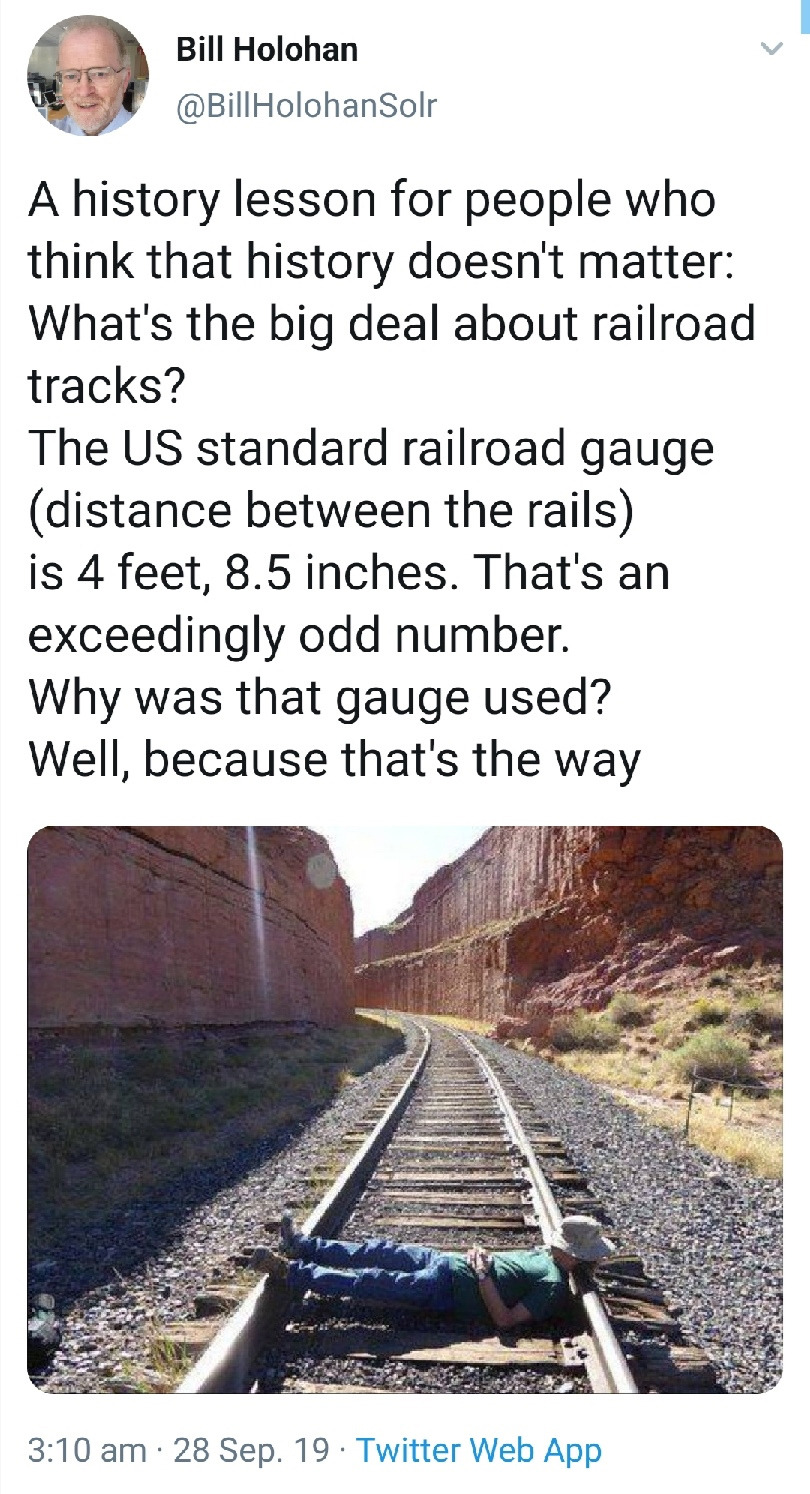
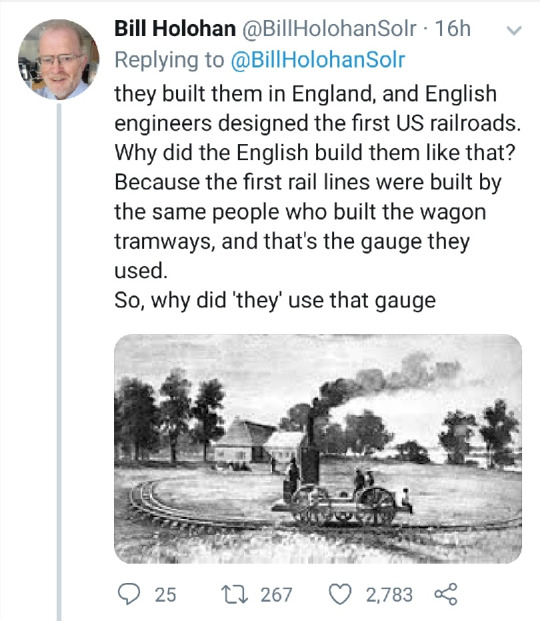

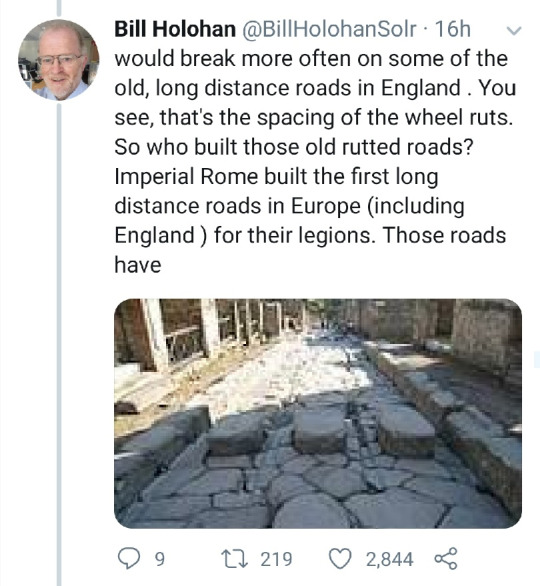
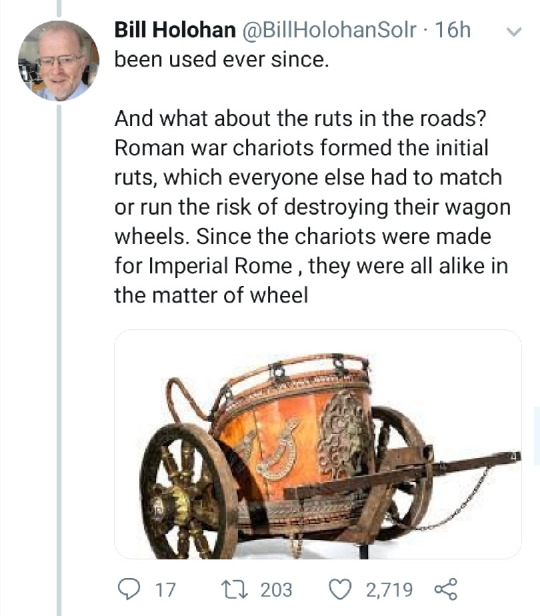

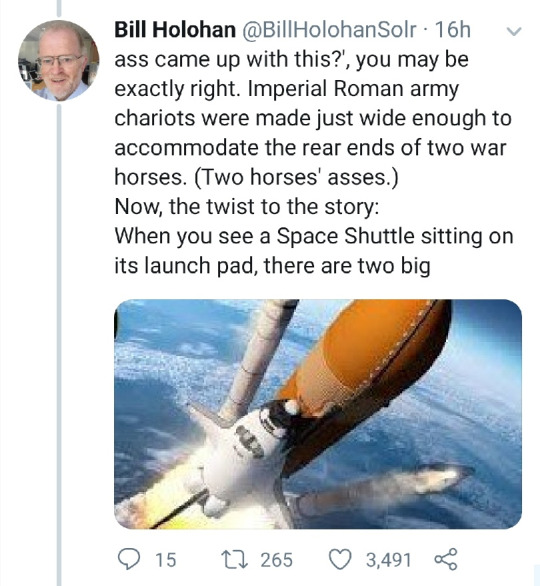
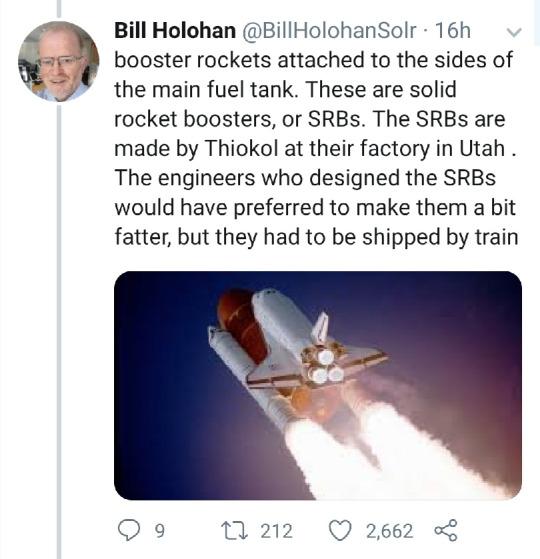
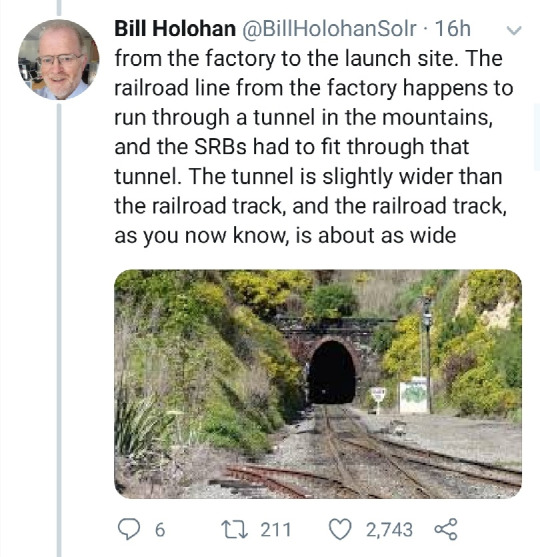
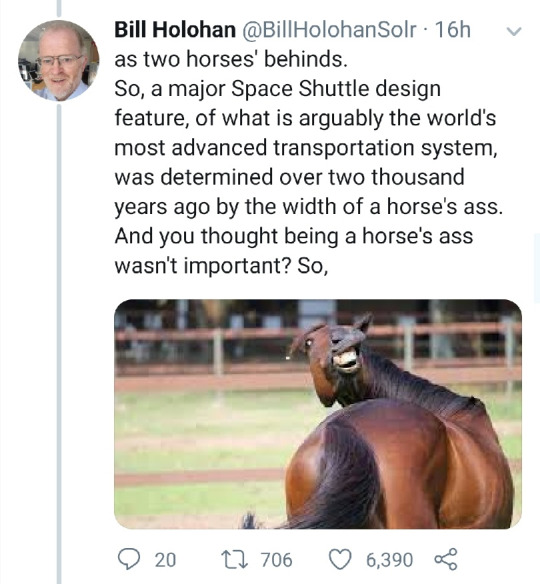
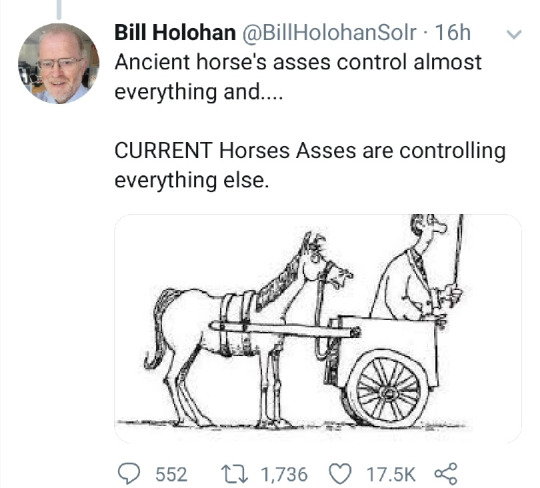
#also the fact that the GWR and its seven-foot gauge dominated the South of England#(you know the bit most accessible to Romans)#until the government stepped in and basically forced them to harmonise with the narrower gauges further north#kinda puts a spanner in the works of this tale too#broad gauge was arguably technically better but standard had greater adoption and harmonising was a bigger priority#than the comparatively minor benefits of the nroader gauge#yes I am autistic how can you tell?
155K notes
·
View notes
Note
top 10 trans trains?
A train (from Old French trahiner, from Latin trahere, "to pull, to draw"[1]) is a series of connected vehicles that run along a railway track and transport people or freight. Trains are typically pulled or pushed by locomotives (often known simply as "engines"), though some are self-propelled, such as multiple units. Passengers and cargo are carried in railroad cars, also known as wagons. Trains are designed to a certain gauge, or distance between rails. Most trains operate on steel tracks with steel wheels, the low friction of which makes them more efficient than other forms of transport.
Trains have their roots in wagonways, which used railway tracks and were powered by horses or pulled by cables. Following the invention of the steam locomotive in the United Kingdom in 1804, trains rapidly spread around the world, allowing freight and passengers to move over land faster and cheaper than ever possible before. Rapid transit and trams were first built in the late 1800s to transport large numbers of people in and around cities. Beginning in the 1920s, and accelerating following World War II, diesel and electric locomotives replaced steam as the means of motive power. Following the development of cars, trucks, and extensive networks of highways which offered greater mobility, as well as faster airplanes, trains declined in importance and market share, and many rail lines were abandoned. The spread of buses led to the closure of many rapid transit and tram systems during this time as well.
Since the 1970s, governments, environmentalists, and train advocates have promoted increased use of trains due to their greater fuel efficiency and lower greenhouse gas emissions compared to other modes of land transport. High-speed rail, first built in the 1960s, has proven competitive with cars and planes over short to medium distances. Commuter rail has grown in importance since the 1970s as an alternative to congested highways and a means to promote development, as has light rail in the 21st century. Freight trains remain important for the transport of bulk commodities such as coal and grain, as well as being a means of reducing road traffic congestion by freight trucks.
While conventional trains operate on relatively flat tracks with two rails, a number of specialized trains exist which are significantly different in their mode of operation. Monorails operate on a single rail, while funiculars and rack railways are uniquely designed to traverse steep slopes. Experimental trains such as high speed maglevs, which use magnetic levitation to float above a guideway, are under development in the 2020s and offer higher speeds than even the fastest conventional trains. Trains which use alternative fuels such as natural gas and hydrogen are another 21st-century development.
#I fuckin love trains bro#just don't know enough about them to have a particular favourite#they did kinda go off with steam trains though#we should bring that silhoutte back#asks tag#friends tag#oh yeah just remembered that I had a 'thomas the tank engine' themed 3rd birthday???#Turns out my hatred of cars was fuckin fated or somethin i dunno#pybro tag
0 notes
Photo

Exploring day. Found this piece of rail sticking out of the ground along the Avon riverbank. I poked in the mud a bit and determined it was some sort of lightweight flat bottom rail - similar to that used by local wagonways such as the Avon & Gloucestershire, which reached the river a mile or so upstream from here. #outdoors #industry #industrialarcheology #railway #rail #foundintheground #tramway #wagonway (at Avon Valley Woodlands) https://www.instagram.com/forest.pines/p/Bu1aWSinJSW/?utm_source=ig_tumblr_share&igshid=1u356h2j8y53w
1 note
·
View note
Text
Me, laying on a therapy couch: Now, you'd think with the existence of airships and the prevalence of tape that you'd be able to accept the technology anachronisms of Disco Elysium, it's a thing to expect with all media, but the Franconigerian cavalry wore lamellar and see, that's an armor from the BCE's, wikipedia has a picture of the terracotta army up top, the armor you associate with Romans is lamellar. Now, I'm not sure when it stopped being a thing, but they seem a bit odd to be seen alongside flintlocks, which were invented in the 1500s, which they also used. There were also trains in the Franconigerian era, and while Wikipedia thinks it can go "oh Babylonia had wagonways, that's a train" we all know that trains are like steam trains, and that's 1804!
The therapist, being held captive: .....Do you think you want to talk about your parents?
Me: How can I talk about such petty issues like """my father""" when Franconegro was an innocence in the fifth century! Disco Elysium doesn't chronicle the centuries that passed, how can they have a fifth century!
#disco elysium#all of my disco elysium posts are me coming in twelve hours after doing my atlas research and going 'i'm still mad about this fact'#the last thing i wrote last night was a note: SEARCH BY ‘CENTURY’ CENTURIES’ AND ‘ERA’ FOR SOLID TIMELINE STUFF FUCK MY ENTIRE FUCKING ASS#because i realized that the progression of time is important if you want to talk about the worldbuilding. in hindsight this is obvious#but this did not prevent me from titling the heading 'Timelines/Eras/Fuck my ass'#this fact pissed me off so much that i complained on twitter too!! look at me using two different social medias!!!
199 notes
·
View notes
Note
Do you have any fun facts about trains and their history? I’m really interested to learn about this
Yes, absolutely! For this post, we might as well start at the very beginning...
How old are steam locomotives?
The first thing you'd all likely recognize as a steam locomotive was built by an engineer named Richard Trevithick, one of the first people to realize high-pressure steam could move a piston in a steam engine, if not straight-up the first to do so. He built a number of experimental steam engines that were capable of moving people and goods in the early 1800s, with the best known being the Puffing Devil (1801) and Catch Me Who Can (1808), the latter of which was the first steam locomotive to carry fare-paying passengers. This is a drawing of Catch Me Who Can:
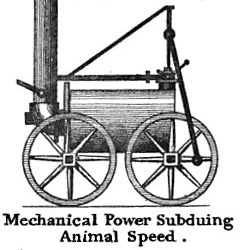
Like later steam locomotives, it has a boiler, a smokestack/chimney/exhaust, and, of course, wheels. You can recognize this as a rudimentary locomotive. Trevithick's locomotives didn't exactly go into common use, but they set the stage!
Before Trevithick's early locomotives showed up, there were rail wagonways, often used in mining and other similar industries that required a lot of things to be lugged around. These wagons were pulled on rails by horses. But because of Trevithick's work, steam locomotives started to be considered more viable and worthy of exploration. In 1812, seventeen years before the Stephensons built their famous Rocket, the locomotive Salamanca was built - it helped with mining.
Oh, Mr. Stephenson...
Now we're getting to things people are more likely to have heard of. If you're into trains, there's a good chance you've heard of the 1829 Rainhill Trials. If you're not familiar with them, they were a highly significant event in railroad history. The Liverpool and Manchester Railway was nearly completed, and they were very interested in steam propulsion. George Stephenson, who was the railway's principal designer, argued that locomotives would be the best way to move goods and passengers along what would be the world's first inter-city railroad, and so a competition was opened - ultimately, five locomotives were entered, including one operated by a horse walking on a treadmill. It was disqualified for not being steam-powered and also because the horse broke through the treadmill at one point and fell. That is not a joke. It looked like this.
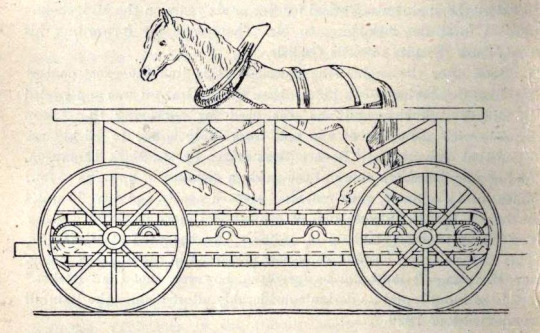
The winner - the only locomotive to successfully complete the Rainhill Trials - was Rocket, built, incidentally, by Stephenson and his son, Robert. No sabotage, they were just the best at it. Remember, another team literally tried to run a locomotive with a horse on a treadmill. Today Rocket happily enjoys her retirement at the National Railway Museum in York, where she lives with other famous locomotives, including Flying Scotsman and Mallard.

(Rocket at the Science Museum, London before moving to the National Railway Museum.)
Locomotive technology quickly hopped the Atlantic around this time - notable locomotives in America of the era include Hobokenite John Stevens III’s locomotive, the first built in the United States (1825), Peter Cooper’s Tom Thumb (1829), Best Friend of Charleston (1830 - the first steam locomotive to suffer a boiler explosion in the United States), the British-built Stourbridge Lion (1829), and perhaps most famously, Robert Stephenson’s John Bull, originally operated on the Camden & Amboy Railroad, partially owned by John Stevens III’s son, Robert L. Stevens. John Bull lives at the Smithsonian and is technically operable, making it the world’s oldest operable steam locomotive in preservation.
From there, the technology advanced fairly quickly! By the American Civil War (1861-1865), you had locomotives like the General (made famous by a film by noted train lover Buster Keaton):
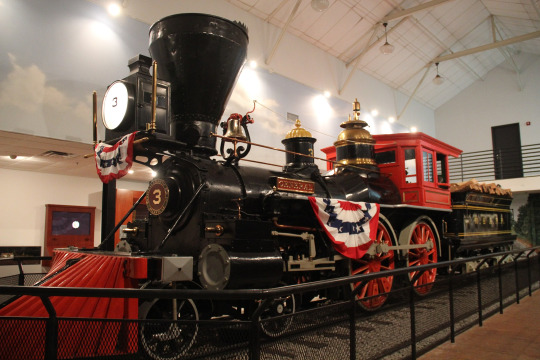
We can use Whyte notation now - the General is a 4-4-0 American.
What is Whyte notation?
Whyte notation is how we describe steam locomotive classes. This is determined by their wheel arrangement. The General, pictured above, has two pairs of leading wheels, two pairs of drive wheels (the big ones, with the rods attached), and no trailing wheels, hence 4-4-0. Whyte notation can be applied to internal combustion and electric locomotives, but it’s most commonly used for steam locomotives. If you see me talking about a 2-8-4 Berkshire or a 4-6-2 Pacific, for example, that’s what I’m referring to!
Why did you choose the General to highlight here?
Because I minored in American Civil War Era Studies in undergrad and the General was at the center of a bizarre chase during the war - some Union spies led by James J. Andrews stole her with the intent of bringing her behind Union lines, and were pursued by a conductor named William Allen Fuller on foot and then by handcar - and finally with another locomotive, the Texas. As mentioned above, Buster Keaton made a film based on this event, and it’s widely regarded as some of his best work.
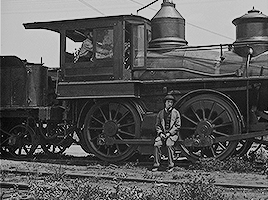
Do not try this at home. This is extremely dangerous. (Buster did all his own stunts, as usual, and in the scenes where his character is on the footplate, he actually operated the locomotives by himself in the film. I’ve always envied him that.)
Are there any other weird train things you think warrant being in this post?
I did do a write-up on the Crash at Crush once, which was an intentionally staged locomotive crash for entertainment, but I think I need to tell my favorite train story - the GG1 in the food court. Yes, I only know this story because the GG1 is my favorite electric locomotive and I’m weirdly obsessed with it.
Washington D.C.’s Union Station has a food court in the basement, with a number of restaurants including a Johnny Rockets. Before this became a food court, though, it was a baggage storage area. It’s important that you know it was a baggage storage area and not a waiting room for passengers because of what happened on January 15, 1953.
That night, a train was coming down from Boston to D.C. It was being pulled by Pennsylvania Railroad 4876, a GG1 electric locomotive. As it approached Union Station, the engineer checked the signals as usual and prepared to slow down. When he went to lower the throttle and engage the brakes, however, he noticed the train wasn’t slowing down. It turned out that an angle cock (an air brake valve) wasn’t set correctly on the third car of the train, meaning all cars behind the third passenger car weren’t braking. Somehow, the engineer managed to get the GG1 to navigate through a bunch of switches despite trying to reduce his speed with only a few braking cars available, and he managed to get it down from between 60-70 mph to around 35-40 mph. As he whizzed by, a signalman noticed his distress horns and radioed Union Station to evacuate the concourse. This was done in time, and as a result nobody died as the GG1 shot through the bumper at the station, went through the stationmaster’s office, hit the concourse, and fell into the basement. Here’s the poor thing in what is now a food court.
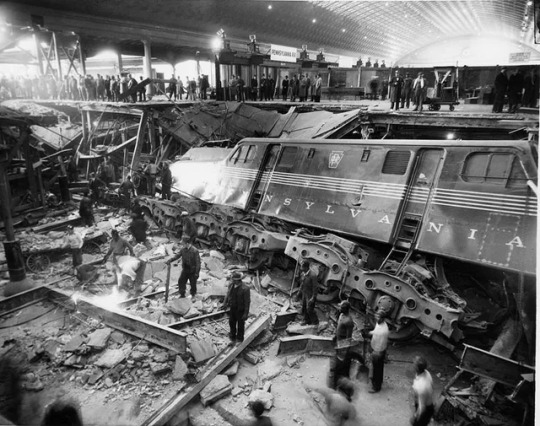
(image source)
Remarkably, there were only minor injuries from this event, but they had to erect a temporary floor above the crash site because Dwight D. Eisenhower was being inaugurated as President of the United States on the 20th, so the GG1 was temporarily hidden in what is now a food court for a few days. Afterwards, she was removed and actually rebuilt, and she now is retired at the B&O Railroad Museum in Baltimore in...less than stellar condition. I want to help cosmetically restore her if possible.
Hope this is the sort of thing you had in mind, anon!
49 notes
·
View notes
Text
The Quick Lil Seagull Post: Part I (Overview of the Furness Railway 1/2 — The Ram$den Years)
@shinygoku suggested some while ago that I write up a post on the “various Seagulls” as sort of helpful background for fic writers.
I said I didn’t know enough.
… But in the end I wrote it anyway.
And then some. When I tried to write "a quick lil reference post" on the Seagulls, I wound up expanding it to cover all the Furness passenger engines. Then I figured people would also need some background on the railway itself. (Plus, I’m going to wind up adding some stand-alone posts on some of the non-passenger classes! Just my favorites. I definitely in no way will wind up with a series that covers every engine that ever ran on Furness metals... Right?)
However, I really need to disclaim, very loudly, that this is just me, “the person on tumblr who has read up on the most K2 breadcrumb trails, sharing their notes with the class.” Not “me, the expert,” coz I’m not. I still have most of my learning ahead of me (I hope!), and there *will* be errors in this summary of what I’ve got so far. My target audience is not train geeks but more TTTE fans looking for creative inspiration/guiderails.
So with that said, let’s start with some fun notes on the Furness:
The F.R. was a rather small railway whose territory hugged the coast and skirted the lakes of southern Cumbria and northern Lancashire counties.
Its 60-plus-mile-main line ran from Carnforth up to Whitehaven. But the heart and soul of the railway was Barrow. Yes, that Barrow. The port directly across the channel from the Island of Sodor Walney Island.
The Company began to transport “red hematite” iron ore mined from throughout the district of Furness to Barrow... which in 1846 was just a small hamlet on the seaside that had no idea of the amount of industrialisation that was about to hit it.
Red hematite ore was only in moderate demand—until the Bessemer process revolutionized steelworking, and also made the tricky-to-work red hematite more useful than ever before. Demand for the stuff skyrocketed overnight!
Apocryphal (but some contemporaries clearly believed it to be true): The Indian Red livery of the F.R. engines was a nod to the “red hematite” ore on which the railway had been founded.
From its origins as an isolated wagonway run by four little 0-4-0 tender engines in 1846, it grew over the next near-80 years to a modern, diversified railway 130-engines strong, with junctions and through trains with the L.N.W.R. and the Midland Railway. If its territory was small, and if it shared the M.R.'s "small engine policy" (mostly), it was nevertheless a thoroughly modern railway known for its “smart management” when it was absorbed into the L.M.S.R. at grouping.
This history can really be divided into two eras. The first approximately 50 years (right up to the 1900s) were the “mineral era.” This was decidedly before it was a first-class railway. During this era, the point was to ship red hematite and make bank! Period! When No. 3 (the now-preserved National Railway Museum engine known as “Old Copper-Nob”) hauled a directors’ special in 1848, it was for a bunch of rich industrialists to rejoice in a year of amazing dividends... and to congratulate each other for how few non-excursion passenger trains they had thus far managed to get away with running.
I’m sure the locals were thrilled.
Anyway, the F.R. in the 1800s—in this first era—was dominated by a man named Sir James Ramsden.
I’ve read a few of the more railhistory-minded TTTE fans claiming he is a very Sir Topham Hatt I figure. Decide for yourself:
James Ramsden had been an engineer with Bury, the famous locomotive builders, when he got the position as first Locomotive Superintendent of the new F.R.
In six years he had advanced to company secretary. He then spent just shy of 30 years as managing director.
Critics observed that the other directors were just figureheads who deferred to Ramsden on everything, making the railway a one-man show.
While managing the F.R., he also served six successive terms as Mayor of Barrow.
Somewhere during those terms, he was Sir'd.
While handling his Mayor and Knight and Railway Robber Baron roles, he was also managing director of Barrow Hematite Steel Company.
And a few other companies.
Not to mention managing director of the Barrow Shipbuilding Company. Which he founded.
So yeah. I don’t see the resemblance. Sir Topham was a slacker compared to this guy. Busy, busy, busy!
Speaking of a lack of resemblance(?)… he looked like this:

(Sidenote: Circa 1900, Barrow Shipbuilding Company underwent a change in ownership and became Vickers. Yes, Vickers as in one-half of the later Metropolitan-Vickers, who built such great ships. And such dubious diesel-electric type two railway engines. Yes, laugh at those ringlets and sideburns if you will, but we have him to thank for BoCo. Goddammit.)
What’s the point here? Well, Ramsden dominated the first era of the Furness, and withstood all critics and challengers… of which there were more than a few.
Mostly, he was criticized for investing millions of pounds over the course of his tenure into Barrow Docks. Y'know. New and ever-expanding docks in what was by then basically Ramsdentown. This was actually a sound investment for the F.R.—but malcontents observed that this was coming at the expense of, well. the entire rest of the network.
“We have priceless natural beauty spots that mass industrialization and unchecked mining are going to destroyyy!” “The only town in the whole district that gets decent service is *spits* Barrow!” You know, yadda, yadda. Buncha whiners.
Okay, but, seriously really are a remarkable amount of documented complaints about the F.R.’s anemic passenger service in this time. The timetables were, to put it kindly, unambitious. Nor were they often kept! One irate correspondent noted to a local newspaper that, when his train was late (as it so often was), he might be able to get to his destination faster by walking.
Let me offer a rare historical portrait that gives the discerning reader a glimpse into how much Ramsden probably cared:

However! The red hematite market could not favor the English forever! As the 1800s went on, the damned Germans and Spanish started to flood the market with cheaper stuff. (Whomp, whomp.) And every time there was a downturn in the hematite trade, mines and steelworks in the Furness district would shut down, while the railway’s finances would suffer.
In the 1890s, the F.R. began a transition to its second, “modern” era, where it set out to reinvent itself as a full-service railway. This meant, like, transporting people to places they wanted to go, in a timely fashion. Or something.
More seriously, it meant marketing the Lake District as a tourist spot—which worked so well that it remains one to this day—as well as upgrading its stock—which worked so well that we got big-ass Seagulls and gorgeous blue-and-cream corridor bogie coaches out of the deal!
Even Ramsden was slowly glancing in this direction... but it probably helped speed the change along when ill health finally did what no man had ever accomplished, and in 1895 forced him to freakin retire his control-freak ass already.
… but before we move on to the second era I first have to tell you some more Hatt-ian tidbits about this old bastard. I hafta.
He had one son. Ramsden Jr. became Superintendent of the Line in 1896, the year directly after his father retired���lest we think that, like, non-Ramsden people can run this place unsupervised. (Later he became a Furness and an L.M.S. director too. Granted, as far as I am aware, none of his progeny went into railway management.)
Ramsden the Elder seems to have started the Furness tradition of selling off their locos to smaller railways and industry. This is why we still have two of our three preserved Furness locos today—Nos. 20 and 25 escaped the L.M.S. enscrappening because they were safely employed at the steelworks! That’s nice and all, but at the time critics would sceptically enquire as to why he was selling locos still in good condition *cough* to companies he was also the managing director of (Barrow Hemelite Co., mostly). Ramsden would say that it was better for the F.R. to sell them while they could still command a good price, thank you so very much—and I’ll leave you to decide whether that convinces you or not.
Anyway, quite a number of Furness engines from this first era continued after their railway withdrawal date, and since they were often working for companies that were basically also the Ramsden personal brand I imagine there was a very “still family” feeling. No more than the distance between Mavis and Toby.
The F.R. got Alfred Aslett, who had a wonderful track record turning around the Cambrian Railway, as Ramsden’s… er, not-replacement.
For Ramsden, you see, was sooo larger-than-life in the annals of the Furness district that the railway made up a new job title for Aslett… rather than commit the sacrilege of ever naming another “managing director.”
*dartboard meme* I’ve had enough of this dude.
~ ~ ~ ~ ~ ~ ~
Next Time: Overview of the Furness Railway 2/2 — All Set with Aslett! (Wait, What Do You Mean We Are Going to War and Then You're Going to Amalgamate Our Railway with the Bloody Midlanders?!)
#real true railway stuff#furness railway#sir james ramsden#the fat controller#alfred aslett#ttte edward#... hmm not sure what else to tag this#is this worth the general ttte tag or will that just annoy people?#the furness series
29 notes
·
View notes
Photo



Guided buses: Buses that can behave like a train
Guided buses use a specific technology, commonly a kerb guide wheel (seen in the first photo from below), to guide a bus and keep it on track, enabling it to drive similar to light rail or tram on a dedicated lane, evading traffic congestion, while also retaining the ability to use regular roads, so that passengers don’t have to change to a different mode of transportation. Furthermore, buses can be kept to more narrow pathways at a higher speed and get closer to platforms, making entrance easier.
Despite being something that can and is often described as combining elements of buses and railway systems, the principle of a guided bus actually predates both. The Gloucester and Cheltenham Tramroad, a horse-drawn tram dating to 1809, already had a kerb-guidance system that can also be seen in the pictures above.
The first modern guided bus was first used in West Germany in the city of Essen, but one of the most prominent and most used guided bus systems is the O-Bahn in Adelaide (shown above in the first photo from above), where it replaced a planned expansion of a tram network.
Further reading:
Guided Bus Explained - London Guided Busway
“Guided Busway Development". Transit Australia. July 1997.
Wagonway Research Circle. "Plateways/tramways – overview and list of some available resources". Island Publishing.
D. E. Bick, The Gloucester and Cheltenham Railway and the Leckhampton Quarry Tramroads (1968)
Picture sources:
O-Bahn, first photo from above: Beneaththelandslide at English Wikipedia, Public Domain
Leigh-Salford-Manchester Bus Rapid Transit, second photo from above: Spsmiler on Wikimedia Commons, Public Domain
Kerb guide wheel: Martin Hawlisch (LosHawlos), CC BY-SA 3.0, via Wikimedia Commons
30 notes
·
View notes
Text
Getting Ready on the IB&O Rail Trail
My first decent walk in preparation for the Portuguese Way. It was a nice 15 km walk from Tory Hill, Ontario to Wilberforce, Ontario - about 15 km.

Today I gained an appreciation for the beauty of the area that I grew up in. It's as beautiful as anywhere in the world.




The trail is beautiful, through a maple forest, past numerous marshes and with lots of wildlife along the way. I saw frogs, a great blue heron, blue jays, and obvious signs of beavers. Insect repellent is recommended.

The IB&O Rail Trail stretches 16 km, from Gooderham to Wilberforce - a great day walk.
FUN FACT: The Irondale, Bancroft & Ottawa (IB&O) railway was originally opened as the Myles Branch Tramway in 1878 as a horse drawn wagonway. The railway eventually stretched from Kinmount to Bancroft and ran until 1960.
0 notes
Text
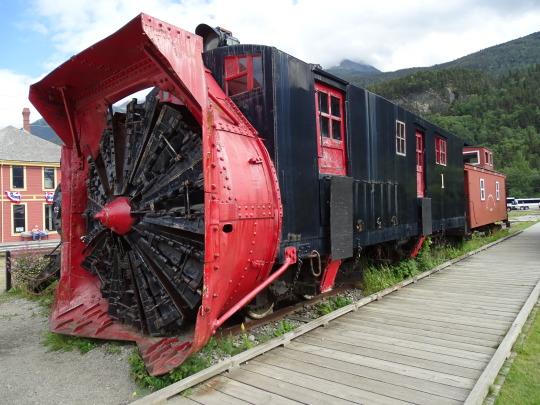
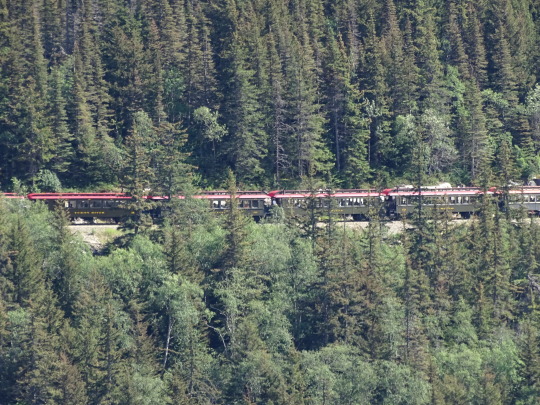


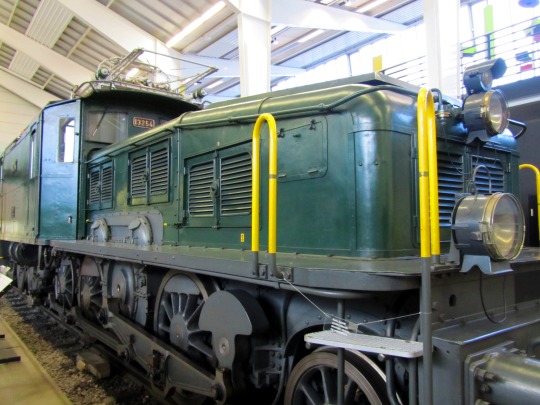
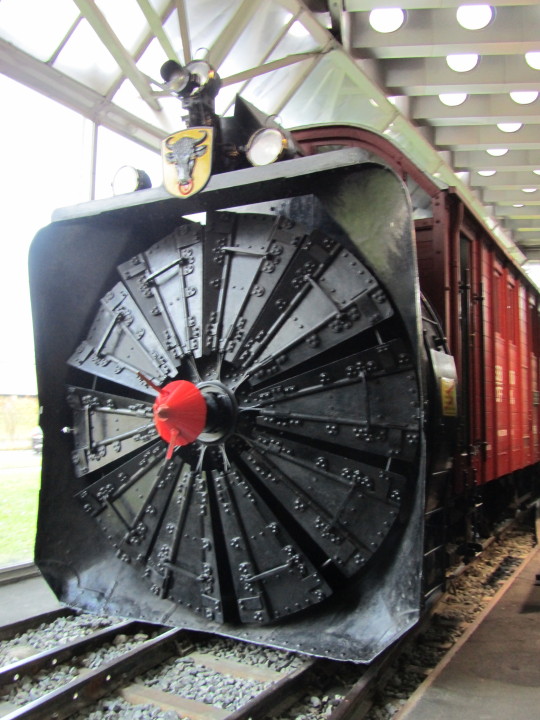
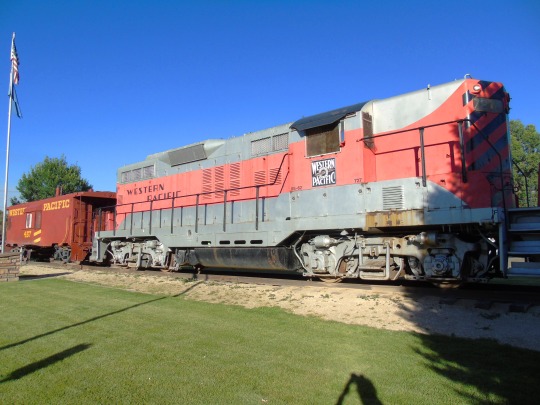
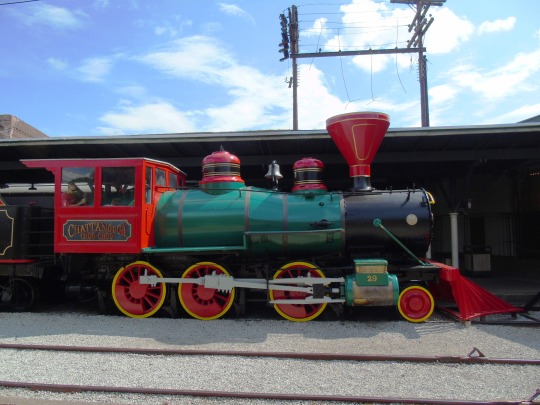
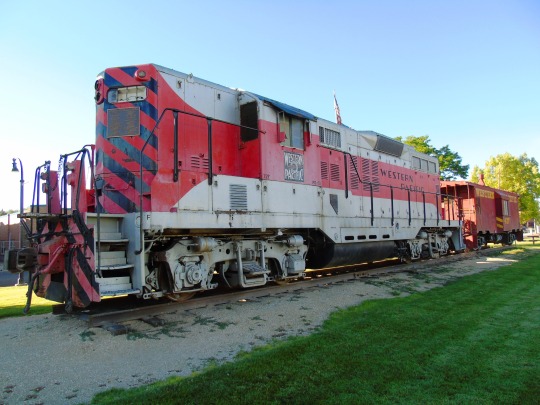
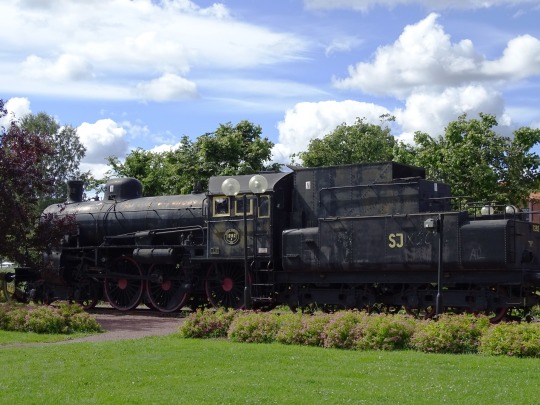

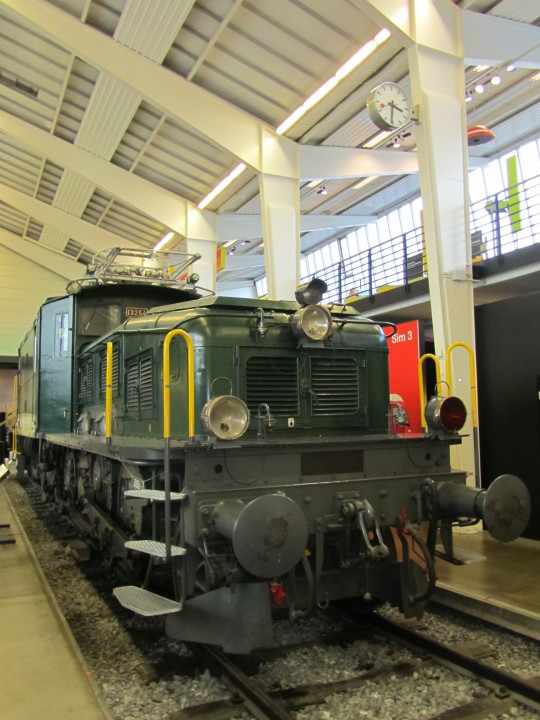
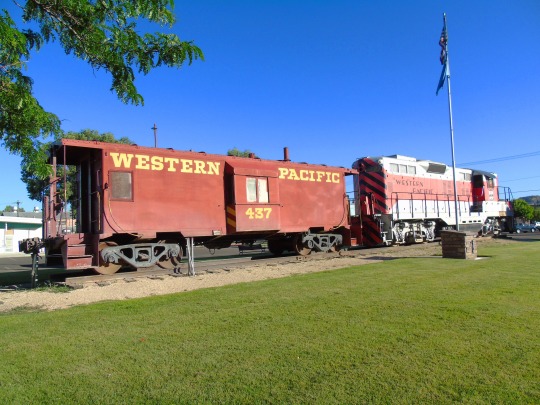
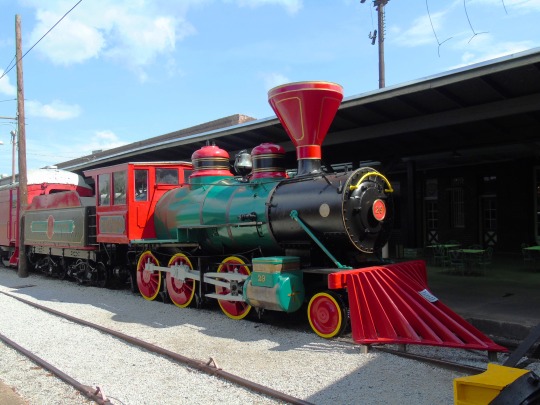


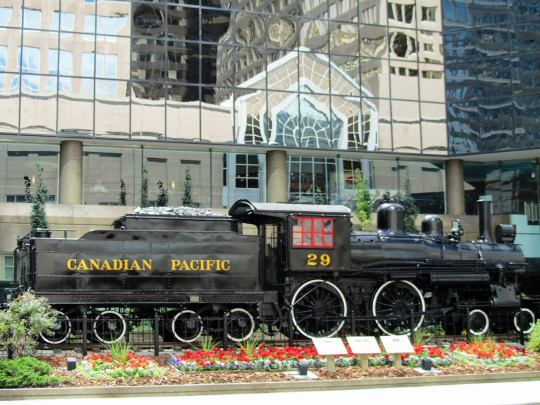


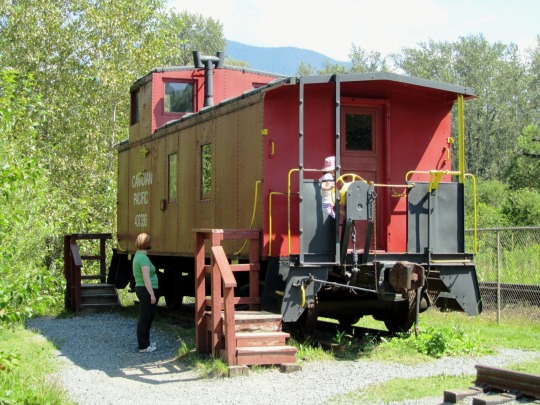
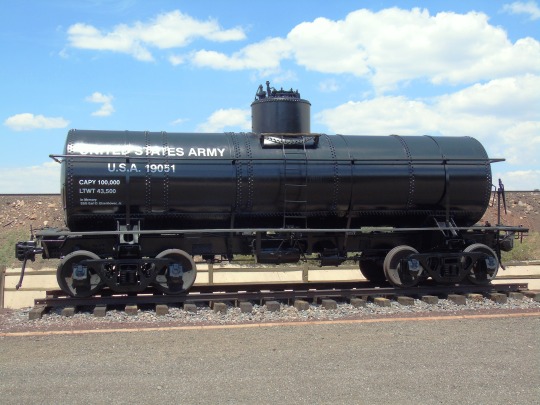
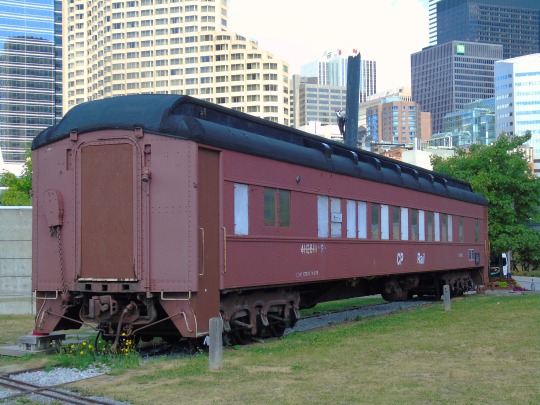

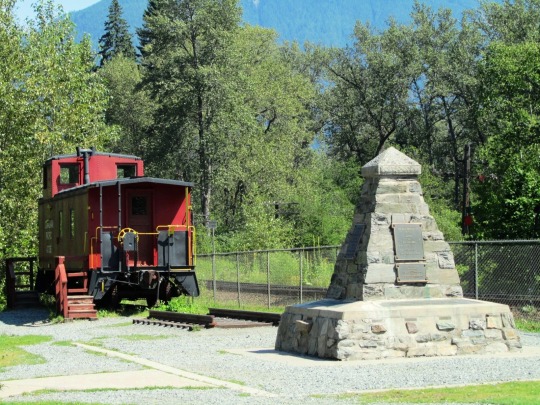
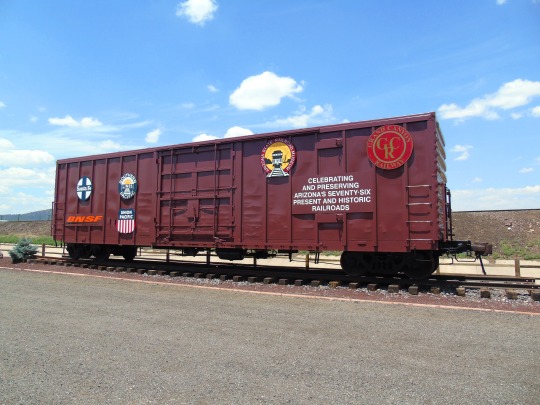
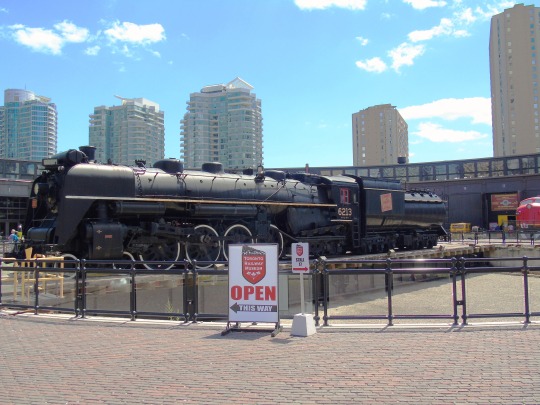
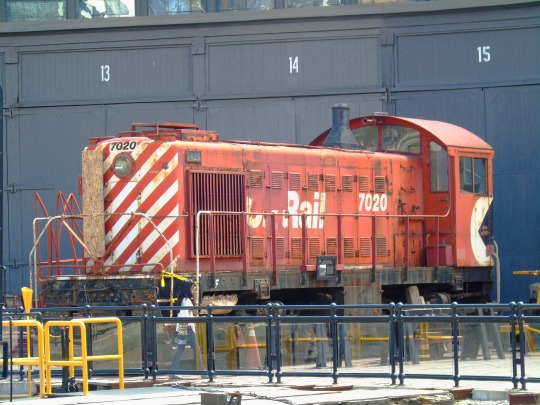

National Train Day
Go out and take a ride on a train, or watch them go by from a comfortable vantage point, whether fast, sleek commuter trains or large, loud steam engine transporters.
They cross thousands of miles across the countryside all over the world, transporting goods and passengers to places far-flung, and bringing back the same to their point of origin.
Two gleaming lines of silver lay their path as they move through cities and forests, mountains, and plains to bring everything to those who need it, whether it’s cargo or people. Of course, we’re talking about trains, those powerful machines that inspired so much of history, and have done amazing things for economies and industry all over the world.
National Train Day commemorates these beautiful machines and the role they play in our lives.
History of National Train Day
The history of National Train Day is the history of trains, and that history goes back farther than you might suspect. Railroads were actually a progression from wagonways, which were essentially railroads powered by horses, and have a history going back over 2000 years.
The first example of what we might call a “train track” emerged near Corinth in Ancient Greece in around 600 BC. Men and animals would pull boats along grooves in limestone across a five-mile course to their destination in the sea. The Romans did something similar in Roman Egypt.
The reason wagonways (and of course railways) came into existence was one of pure practicality: you could transport larger loads over a greater distance with prepared paths!
The first modern ‘ways’ weren’t even created with metal rails, they were instead created with wooden rails, and in the distance path even cut-stone tracks. By being carefully prepared, you could increase the amount a single horse could haul from one ton to nearly 13 tons! That’s a considerable improvement in cargo capacity and a massive boon to those who have to move a lot of it a good distance.
Of course, with wooden rails, they had to be often replaced, and so it became common practice to cover them with a thin metal plate to help the wood last.
The industrial revolution changed all that, and metal rails became more prominent. Around 1750, industry began producing dramatically more iron than at any point in the past. New techniques made possible by the modern science of metallurgy and engineering created the conditions for an output explosion.
With increased supply, the price of tracks began to fall. It suddenly became feasible to lay more of them, replacing the problem-stricken wooden versions that tended to break often.
There was still a problem, though: some consignments had a nasty habit of veering off the rails – literally! In response, an industrial innovator and colliery manager called John Curr saw that the problem was flat wheels. He realized that you needed some way to keep the wagon on the line. His idea was to create an L-shaped profile to the wheel on the inside that would prevent it from slipping off the track.
Of course, none of this early development mentions steam-powered locomotives – the thing that people think about first when they talk about trains. The actual steam engine only emerged in 1769 following James Watt’s proof-of-concept. But even he didn’t see the potential. He wanted to use steam to power wheels in factories, not necessarily trains.
It took more than thirty years for the first fully functional steam locomotive to appear in 1804 under the direction of Richard Trevithick. Trevithick, however, didn’t manage to commercialize the idea. While he built plenty of demonstrations, he didn’t have the means to put it to good use. Thus, the first commercial train journeys only began in 1812, and on a tiny scale.
But, of course, we all know what happened next: trains took over the world. They gave birth to our modern, productive civilization and transformed the life of the average person forever.
Because trains played a big part in our collective history, it was only a matter of time before someone, somewhere developed the idea of hosting a “train day.” An event like this would be a chance for everyone in the world who has benefited from locomotives to celebrate their valuable role, choo-chooing humanity into the future.
In 2008, Amtrak established National Train Day to help celebrate the history of the locomotive. The idea was to engage the general public more on the subject of trains and their history in the development of the modern world. National Train Day was a homage to the efforts of our ancestors in building out the rail network. It focuses, particularly on the transcontinental railway. During its heyday, National Train Day was a major event. While Amtrak was the clear lead, museums and other institutions related to trains all took part. Even charities got involved, seeing it as an excellent opportunity to fundraise.
Amtrak decided to host events every year, but, unfortunately, got into financial trouble. The firm closed its official National Train Day in 2015. That, however, wasn’t the end of the matter. Enthusiasts loved it so much, they carried on celebrating the occasion in the years that followed.
How to celebrate National Train Day
The best way to celebrate National Train Day is to go out and take a ride on a train! It doesn’t matter where it’s going, riding a train can be a fantastic and relaxing experience.
Some towns have steam trains that are part of their history and still in operation, and dinner trains are always a nice experience. Or, if you’re planning on taking a trip, rather than taking a car or plane, take a train for a relaxing ride across the country. National Train Day is a great chance to go out and see the world and experience these amazing vehicles.
Source
#Skagway#Alaska#National Train Day#NationalTrainDay#second Saturday in May#11 May 2024#Toronto Railway Museum#original photography#summer vacation#USA#Canada#Napa Valley Wine Train#Elko Railroad Park#Krokodil#Be 68#Dampflok C 56 Elefant#Chattanooga Choo Choo#Switzerland#Verkehrshaus der Schweiz#Swiss Transport Museum#The Last Spike#Kingman#I really love the last pic
1 note
·
View note
Photo

By @wagonways #photography #urbanphotography #washingtondc #dcmurals #urbanart #madeindc #adamsmorgan #muralsdc #murals #muralists #truce2headrush #muralistsofinstagram #streetart #dcmuralsproject #dcmuralproject #blackartist #blacklivesmatter✊🏽✊🏾✊🏿 #amplifyblackvoices #amplifymelanatedvoices #blackart (at Adams Morgan Neighborhood) https://www.instagram.com/p/CKpCz41s1Sn/?igshid=sdkwqvmziruj
#photography#urbanphotography#washingtondc#dcmurals#urbanart#madeindc#adamsmorgan#muralsdc#murals#muralists#truce2headrush#muralistsofinstagram#streetart#dcmuralsproject#dcmuralproject#blackartist#blacklivesmatter✊🏽✊🏾✊🏿#amplifyblackvoices#amplifymelanatedvoices#blackart
0 notes
Photo

Possibly an 1830-era stone sleeper block from the Avon & Gloucestershire Railway, close to their Willsbridge Tunnel. #outdoors #railway #earlyrailways #wagonway #tramroad #dramway #england #bristol #willsbridge https://www.instagram.com/p/CAk0o7Xn4h6/?igshid=1fndp11ars293
0 notes